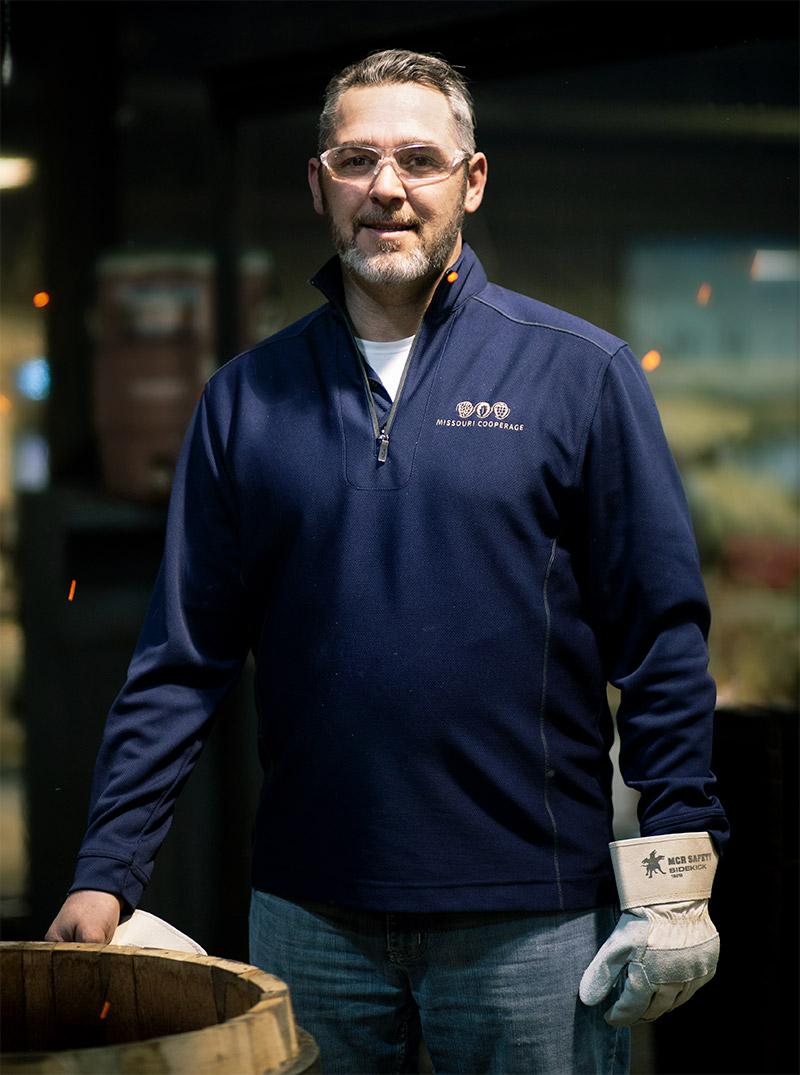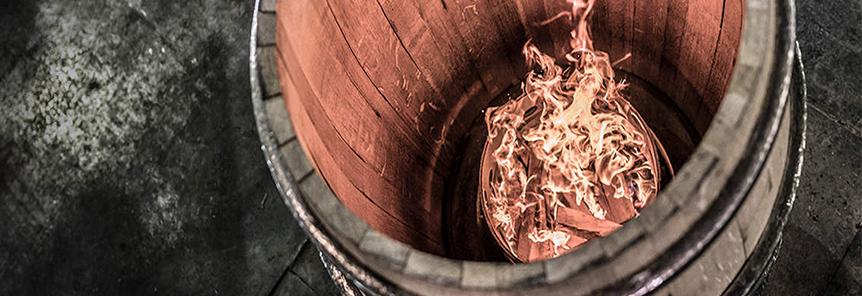Why Toast Before Charring?
In our first post on barrel profiling, we discuss that a charred barrel has two layers - a char layer and a red layer. While the char layer serves as an important filter to remove off aromas and odors, it provides little flavor to the spirit. Because the charring process involves intense amounts of heat most of the compounds we would consider favorable are destroyed in this layer.
The majority of the flavor we get from a barrel is in the red layer which resides just behind the char layer, deeper into the stave. As we go deeper into the stave, the heat from the charring process becomes less intense and it’s in this temperature zone that all the “yummy” compounds are created and maintained.
Barrels are toasted with a less intense heat which allows the red layer to become significantly thicker than in that of a charred barrel. The result is a barrel with a greater concentration of extractives available for the taking, creating a unique flavor profile in the spirit.
After toasting, spirit barrels are still charred to benefit from the char layer’s filtration properties. However, the thicker red layer from the toasting process remains.

How the toasting system works:
- When a barrel arrives at the toasting area, a cooper enters the barrel into the computer system. This pulls up the barrel’s information, including the toasting profile that has been selected for the barrel. The target toasting profile is then displayed on a monitor.
- An oak fire is prepared in the toasting pot. Each pot has temperature sensors, which are linked to the computer system to monitor temperature throughout the toasting process. Once the initial temperature has been achieved, the barrel is placed over a toasting pot and the cycle begins.
- This system progressively tracks the barrel temperature and displays the actual heating curve along with the target toasting profile on the monitor. The cooper’s goal is to keep the actual and target curves as close as possible throughout the cycle.
- To follow the toasting curve, coopers will adjust temperature as needed by adding pieces of oak to the fire or administering droplets of water. The cooper also flips the barrel end-to-end to toast the barrel evenly throughout the cycle.
- At the end of the toasting cycle, every barrel is logged into a database and the cooper evaluates how closely the actual toast matches the target curve.
- After toasting, the barrel is visually inspected and moves to the next phase of production, for spirit barrels this is typically charring.
Getting to Know Missouri Cooperage
Dave Woods has been crafting barrels at Missouri Cooperage for over two decades. After serving in the military, Dave came home to Lebanon, MO. At the recommendation of family members who worked at Missouri Cooperage, he applied and was hired as a general laborer. From there Dave became a purchasing agent before being promoted to Supervisor of the Wine Barrel Assembly department, a position he’s held for the past 18 years.
In his current role he handles the assembly of wine barrels for domestic and international customers. His department is also responsible for both wine and spirit barrel toasting.
“There have been several advancements since I first started toasting 18 years ago. The introduction of our proprietary barrel profiling technology was revolutionary. By utilizing time and temperature we can toast barrels with repeatable, consistent results for our customers.”
Employees on the toasting platform in Dave’s department are toasting several barrels at a time, often with different profiles. These profiles can range from seven to 45 minutes in length with temperature spikes up to 500 degrees.
“You have to stay focused on what’s coming up next for each barrel, whether it’s a temp spike, flip, or adding a lid. It can be very challenging at times. Knowledge is everything when it comes to toasting. As you start adding different barrel types at the same time the adrenaline kicks in. A good day of toasting gives you a sense of accomplishment. My department is made up of true craftsmen.”
Toasting spirit barrels is unique. The same barrel profiling technology is used for wine and spirits, but typically a customer specified char level is applied on top of the toast for spirit barrels.
“My favorite part of toasting comes right at the end. As the barrel is removed from the toasting pot the aroma overtakes you. Depending on the toast profile applied to the barrel aromas like vanilla, caramel, coffee, spice and chocolate release. It’s amazing.”

Wine Barrel Assembly Supervisor
Missouri Cooperage
Share this Post


Comments 3
Please keep the blog posts coming. I visited ISC in Kentucky in 2017, and I was amazed at the process and the craftsmanship on display. These articles just reaffirm the passion the employees and the company have for their products.
Fascinating, thanks for sharing!
Pingback: Elijah Craig Toasted Barrel | Malt - Whisky Reviews